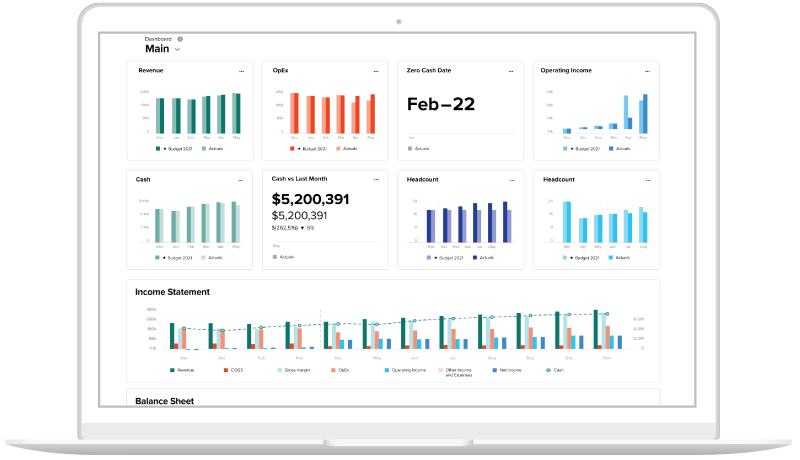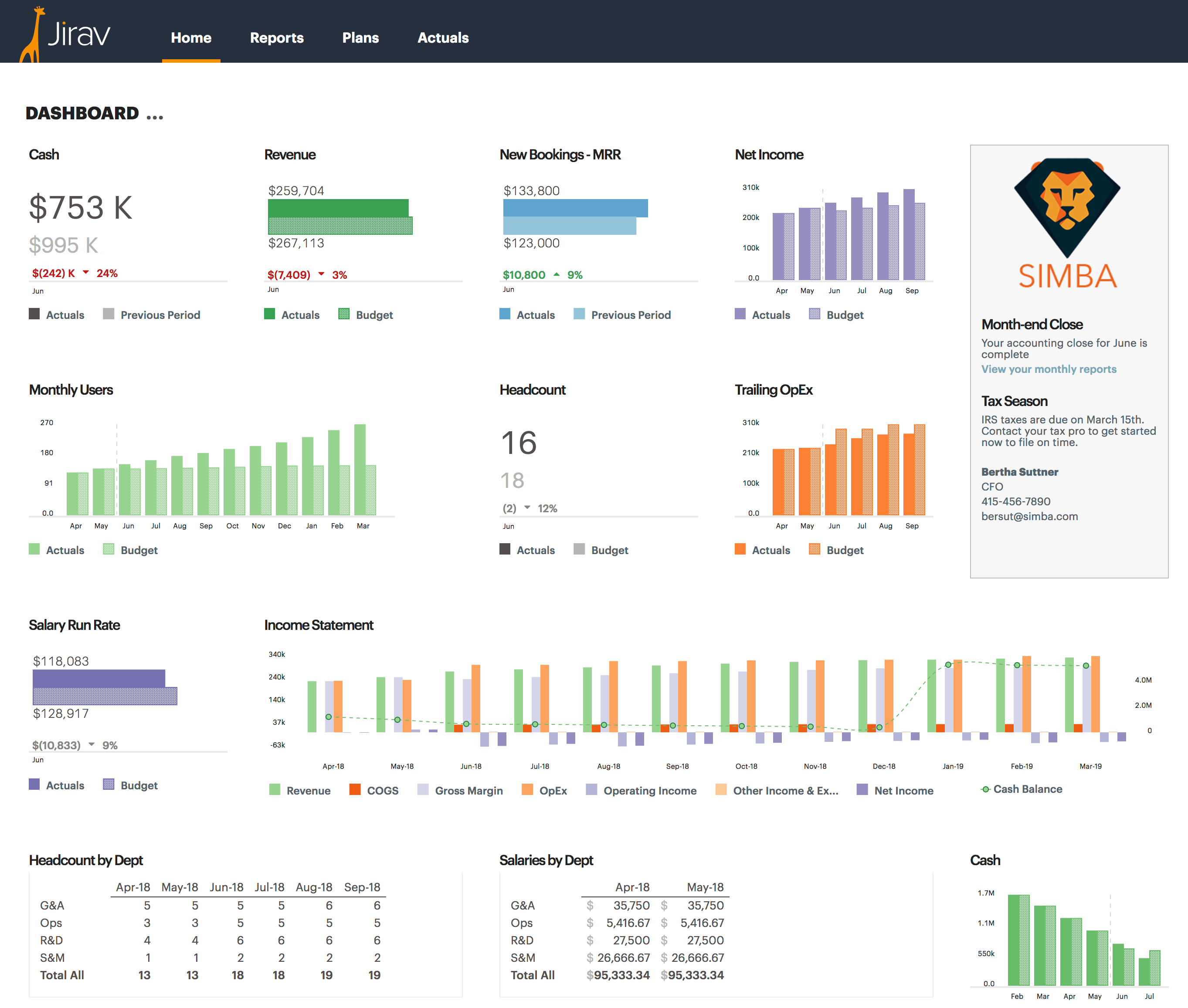As a business, if you evaluate your company's financial health and performance to explore investment opportunities, then you may have come across financial ratios. The term "ratio" might seem like complex math; however, when it comes to investing, that's not always the case. The truth is, there are certain ratios that, when thoroughly analyzed and properly utilized, can simplify financial decision-making and help you stay more informed about those decisions.
By analyzing these ratios, businesses can gain insights regarding investment opportunities, financial strategies, and risk management. This article will discuss some of the most important financial ratios and explain how they can be used to assess a company's financial strength and stability.
- What are financial ratios?
- Why are financial ratios important?
- Financial ratios by category
- Financial ratios by industry
- What is the most important financial ratio?
What are financial ratios?
A financial ratio is a numerical representation of the relationship between two or more financial variables. In simple terms, it's a way of measuring and analyzing your company's financial health, performance, and overall stability, using numerical data extracted from financial statements.
Financial ratios are used by investors, analysts, and managers to make informed decisions about investments, evaluate a company's financial position, and identify trends. Typically, they are determined using primary sources of quantitative data, like a balance sheet, income statement, or cash flow statement.
By examining their financial dashboard and using key indicators and ratios, companies can measure their liquidity, debt load, growth potential, profitability, market value, and more.

Why are financial ratios important?
Financial ratios provide businesses with a way of assessing and evaluating financial performance beyond the data presented in financial statements. Here are some reasons why financial ratios are important for businesses:
- Assessing Profitability: Financial ratios like Gross Profit Margin, Net Profit Margin, and Return on Investment (ROI) can help determine the profitability of a company's operations.
- Measuring Liquidity: It’s essential for businesses to have enough cash and liquid assets to cover their expenses. Ratios like the Current Ratio, Quick Ratio, and Cash Ratio help measure the liquidity of a business. These ratios provide a quick overview of a company's ability to meet its financial obligations in the short term.
- Evaluating Solvency: Solvency is a measure of a company's ability to meet its long-term financial obligations. Financial ratios like the Debt-to-Equity Ratio and Interest Coverage Ratio can help evaluate a company's solvency and ability to manage its debt.
- Analyzing Efficiency: Efficiency ratios, like an Inventory Turnover Ratio, can help determine how quickly a company sells its inventory. A ratio like the Accounts Receivable Turnover Ratio can help assess how efficiently a company collects its receivables.
- Comparing Performance: Financial ratios help businesses compare their performance with industry competitors, identifying areas where the company is lagging behind and areas where it’s performing well. By comparing performance, businesses can also identify best practices and benchmark their operations against industry standards.
- Informed Decision-Making: By analyzing financial ratios, businesses can make data-driven decisions that are in the best interest of the company. For example, a company may use financial ratios to decide whether to invest in new equipment, expand its operations, or take on more debt.
Financial ratios by category
Financial ratios can be grouped into several categories, each serving a unique purpose in assessing different aspects of a company's financial situation. Through monthly financial reporting, businesses can analyze various financial ratios to identify their strengths and weaknesses and make strategic decisions to improve their overall performance. Here are some key financial ratios relevant to every business:
Liquidity ratios
Liquidity ratios measure a company's ability to meet its short-term obligations, by assessing their ability to pay current debts and tracking how these ratios change over time. The three most common liquidity ratios are as follows:
- The Current Ratio assesses a company's ability to pay off its short-term debts using its current assets. To calculate this, divide the current assets by current liabilities.
- The Quick Ratio measures the ability to pay off current liabilities using a company’s most liquid assets, like cash and marketable securities. For this ratio, divide the company's quick assets (cash, marketable securities, and accounts receivable) by its current liabilities.
- The Cash Ratio is a more stringent measure that evaluates a company's ability to pay off its current liabilities using only its cash and cash equivalents. It’s calculated by dividing a company's cash and cash equivalents by its current liabilities.
- Cash Burn Rate measures the rate at which a company is spending its cash reserves. It represents the amount of cash a company spends each month or quarter by subtracting the company's total cash balance at the end of the period from its total cash balance at the beginning of the period. A negative cash burn rate indicates that a company is using more cash than it is generating, which may lead to liquidity issues in the future.
Profitability ratios
Profitability ratios measure a company's ability to generate profits from its operations, by determining how much profit they are generating relative to their sales and investments. Here are the three most commonly used profitability ratios:
- The Gross Profit Margin measures the percentage of sales revenue that exceeds the cost of goods sold (COGS), indicating how much profit a company generates per dollar of sales revenue. i.e. Gross Profit Margin = (Gross Profit / Sales Revenue) x 100%.
- The Net Profit Margin measures the percentage of sales revenue that remains after deducting all expenses, including taxes and interest. i.e. Net Profit Margin = (Net Profit / Sales Revenue) x 100%.
- The Return on Equity (ROE) measures the percentage of net income earned in relation to shareholders' equity, which is the amount of money invested by shareholders in a company.i.e. ROE = (Net Income / Shareholders' Equity) x 100%
- Return on Assets (ROA) measures a company's net income generated from its total assets. It indicates how efficiently a company is using its assets to generate profit. ROA = Net Income / Total Assets
- Expense Ratio is a financial metric that measures the percentage of a company's revenue that is spent on operating expenses, like salaries, rent, utilities, and other costs. It’s calculated by dividing the total operating expenses by the total revenue. A lower expense ratio indicates that a company is more efficient in managing its expenses. Expense Ratio = Total Operating Expenses / Total Revenue
Efficiency ratios
Efficiency ratios help businesses determine how effectively they are managing their inventory and cash flow to generate revenue. These are the four most common efficiency ratios:
- The Asset Turnover Ratio measures how efficiently a company utilizes its assets to generate sales revenue.
- The Inventory Turnover Ratio measures how efficiently a company manages its inventory. The Days Sales in Inventory Ratio is an inventory management metric that measures the number of days it takes a company to sell its inventory. i.e. Value of Inventory / Cost of Goods Sold x (no. of days in the period)
- The Accounts Receivable Turnover Ratio measures how effectively a company collects its accounts receivables.
- The Payables Turnover Ratio measures how efficiently a company manages its payables. The Days Payables Outstanding (DPO) Ratio measures how long it takes a company to pay its suppliers. It’s calculated as (Average Accounts Payable / Cost of Goods Sold) x Number of Days in Accounting Period (or year
- Customer Acquisition Cost (CAC) measures the total cost incurred by a company to acquire a new customer. It includes all marketing and sales expenses associated with attracting and converting a customer, like advertising costs, salaries, commissions, and other promotional expenses. A lower CAC indicates a more efficient customer acquisition strategy.
- Churn Rate is the percentage of customers who cancel their subscription to a service within a given period. It measures the rate at which a company is losing customers, by dividing the number of customers lost by the total number of customers. A lower churn rate indicates higher customer satisfaction and retention.
- Revenue Per Employee measures the amount of revenue generated by each employee in a company. Revenue per employee helps companies compare their productivity and efficiency, by dividing the total revenue by the total number of employees in the company.

Revenue ratios
Revenue ratios are financial metrics that measure a company's revenue generation efficiency and its ability to generate profits from its sales.
- Monthly Recurring Revenue (MRR) is the amount of revenue generated from monthly subscription fees. It’s calculated by multiplying the total number of active subscribers by the average revenue per subscriber (ARPU). MRR = Total number of active subscribers x ARPU
- Revenue Growth Rate is the rate at which a company's revenue is increasing or decreasing over a specified period. It’s an important metric for evaluating a company's financial performance and its potential for future growth. Revenue Growth Rate = (Current Revenue - Previous Revenue) / Previous Revenue x 100
Leverage ratios
Leverage ratios help investors and analysts evaluate a company's ability to meet its financial obligations and assess its overall financial risk. It can be grouped into two categories:
- Debt ratios measure the amount of debt a company has relative to its assets, equity, or other financial metrics. Its subcategories include the following:
- The Debt-to-Equity Ratio compares a company's total debt to its shareholders' equity, showing how much of a company's financing comes from debt compared to equity.
- The Debt-to-Assets Ratio compares a company's total debt to its total assets to show how much of a company's assets are financed with debt.
- The Debt-to-Capital Ratio compares a company's total debt to its total capital, which is the sum of its debt and equity, and shows the proportion of a company's capital that comes from debt.
- Coverage ratios measure a company's ability to meet its debt obligations. Its subcategories include the following:
- The Interest Coverage Ratio compares a company's earnings before interest and taxes (EBIT) to its interest expense.
- The Debt Service Coverage Ratio compares a company's operating income to its debt service obligations.
- The Fixed Charge Coverage Ratio includes additional fixed charges like lease payments and preferred dividends.
Market value ratios
Market value ratios are commonly employed to assess a company's value and are typically used by external stakeholders, like investors or market analysts. These are the most commonly used market value ratios:
- The Price-to-Earnings (P/E) measures the price of a company's stock relative to its earnings per share.
- The Price-to-Sales (P/S) measures the price of a company's stock relative to its sales per share.
- The Price-to-Book (P/B) measures the price of a company's stock relative to its book value per share.
Financial Ratios by Industry
Different industries have unique financial characteristics, and as a result, the financial ratios they use may vary significantly. Here, we'll take a closer look at some of the financial ratios that are commonly used by different industries:
Life Sciences
Life sciences companies, like biotech and pharmaceutical firms, usually require significant investments in research and development (R&D) to develop new drugs or therapies. As a result, they may have negative earnings for several years before launching a successful product. Investors in this industry often focus on ratios that reflect a company's long-term profitability and growth potential.
Some of the financial ratios to consider in the life sciences industry include the Price-to-Earnings Ratio (P/E), Price-to-Sales Ratio (P/S), and Return on Equity (ROE). The P/E ratio compares a company's stock price to its earnings per share (EPS) and is a good indicator of a company's valuation. The P/S ratio measures a company's market capitalization relative to its annual revenue and is useful for evaluating revenue growth potential. ROE measures a company's profitability, by dividing net income by shareholder equity.
SaaS
Software as a Service (SaaS) companies often use financial ratios that differ from traditional software companies. With most SaaS companies having lower capital expenditures than traditional software firms, they tend to have higher profit margins. However, they often have higher sales and marketing expenses to acquire and retain customers, which can reduce profitability.
Important financial ratios for evaluating a SaaS company include Customer Acquisition Cost (CAC), Gross Profit Margin (GPM), Monthly Recurring Revenue (MRR), Churn Rate, and Cash Burn Rate. SaaS companies invest heavily in marketing and advertising to attract new customers, resulting in high CAC.
Since COGS are generally low in the SaaS industry, there tends to be high GPM. MRR represents the predictable and stable revenue generated from customers who are on a monthly subscription plan. Companies must keep a low Churn Rate to maintain a stable customer base and ensure predictable revenue growth. Finally, monitoring Cash Burn Rate is essential to ensure the company has sufficient cash reserves to sustain its operations and fund future growth.
Investment Management
Investment management companies, like asset managers and hedge funds, use financial ratios that reflect the fees and expenses charged for managing these assets. Some of the financial ratios to consider in the investment management industry include the Expense Ratio, Revenue per Employee, and Return on Assets (ROA).
While the Expense Ratio measures the percentage of assets used to cover the company's expenses, the ROA measures a company's profitability by dividing net income by total assets, indicating a company's ability to generate profits from those assets. The Revenue per Employee Ratio measures the amount of revenue generated per employee and is also an indicator of a company's efficiency.
CPG/eCommerce
CPG companies, or consumer packaged goods companies, produce and sell consumer goods like food, beverages, and household products. eCommerce companies sell goods and services online, and their financial ratios often reflect the efficiency of their supply chain and marketing strategies.
Some of the financial ratios to consider in the CPG/eCommerce industry include the Inventory Turnover Ratio and ROI. The Inventory Turnover Ratio measures the number of times a company sells and replaces its inventory over a period and is an indicator of a company's supply chain efficiency. ROI measures a company's profitability by dividing net income by total investments and is an indicator of a company's ability to generate profits from those investments.
Manufacturing
Some of the financial ratios to consider in the manufacturing industry include the Gross Margin Ratio, Inventory Turnover Ratio, and ROI. The Gross Margin Ratio measures the percentage of revenue that remains after deducting the COGS and is an indicator of a company's profitability.
The Inventory Turnover Ratio measures the number of times a company sells and replaces its inventory over a period and is an indicator of a company's supply chain efficiency. And again, ROI measures a company's profitability from its investments.
It’s important to note that financial ratios should not be used in isolation, and a comprehensive analysis should consider other factors like industry trends, market conditions, and company strategy.

What is the most important financial ratio?
There is no one-size-fits-all approach when it comes to selecting the most important ratio; several factors influence the significance of a particular ratio, including the industry - as we’ve explored - as well as the specific company and context.
Financial ratios provide valuable insights into a company's financial performance, trends, and risks that help businesses identify areas of financial strength and weakness. This in turn helps them to make informed budgeting decisions.
For instance, the inventory turnover ratio can help companies determine how quickly they sell their inventory. A low ratio suggests that the company is holding too much inventory and may need to adjust production or purchasing plans. In contrast, a high ratio indicates efficient inventory management.
Similarly, the current ratio, which measures a company's ability to meet its short-term obligations, can be used to identify potential liquidity issues. If the current ratio is low, it may indicate that the company has difficulty meeting its current financial obligations, which could lead to cash flow problems.
To make informed decisions about a company's financial health and potential, investors, analysts, and business leaders must evaluate relevant financial ratios and metrics as part of their financial evaluation. By examining a range of financial ratios, businesses can get a more accurate understanding of their financial position.
With Jirav, you can streamline your financial ratio calculations and gain valuable insights in a few clicks. Book a call today to get accurate forecasting with ease.












